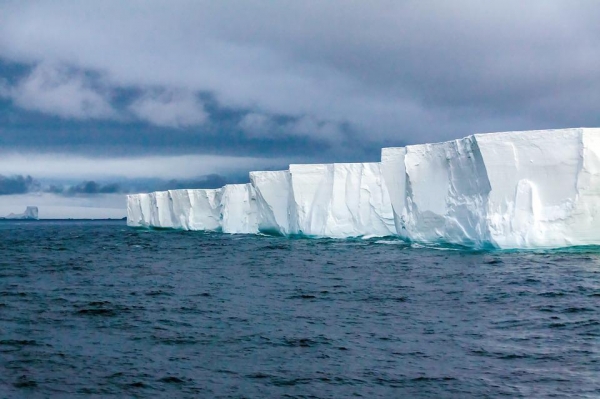A new model developed by Caltech and JPL researchers suggests that Antarctica's ice shelves may be melting at an accelerated rate, which could eventually contribute to more rapid sea level rise. The model accounts for an often-overlooked narrow ocean current along the Antarctic coast and simulates how rapidly flowing freshwater, melted from the ice shelves, can trap dense warm ocean water at the base of the ice, causing it to warm and melt even more.
The study was conducted in the laboratory of Andy Thompson, professor of environmental science and engineering, and appears in the journal Science Advances on August 12.
Ice shelves are outcroppings of the Antarctic ice sheet, found where the ice juts out from land and floats on top of the ocean. The shelves, which are each several hundred meters thick, act as a protective buffer for the mainland ice, keeping the whole ice sheet from flowing into the ocean (which would dramatically raise global sea levels). However, a warming atmosphere and warming oceans caused by climate change are increasing the speed at which these ice shelves are melting, threatening their ability to hold back the flow of the ice sheet into the ocean.
"If this mechanism that we've been studying is active in the real world, it may mean that ice shelf melt rates are 20 to 40 percent higher than the predictions in global climate models, which typically cannot simulate these strong currents near the Antarctic coast," Thompson says.
Read more at California Institute of Technology
Photo Credit: Eknbg via Pixabay


